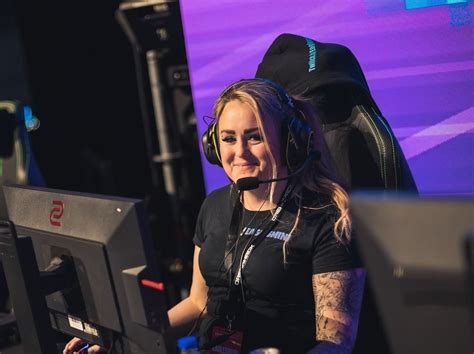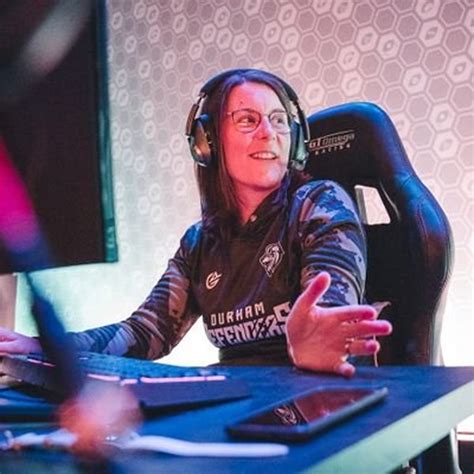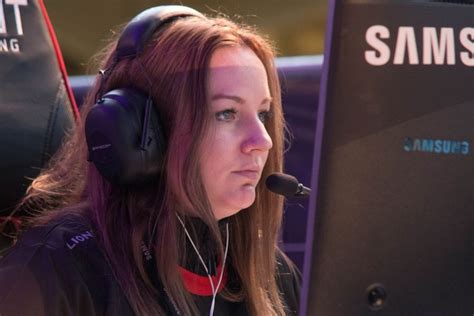LoL Esports has grown into one of the biggest competitive gaming scenes in the world, captivating millions of fans and players alike. From its humble beginnings to the global tournaments that now dominate the esports landscape, League of Legends continues to evolve, offering thrilling competitions and unforgettable moments. This guide delves into the rich history of LoL Esports, exploring the major tournaments, standout teams and players, and the intricate game mechanics that shape every match. Whether you’re a seasoned fan or new to the scene, this comprehensive overview will provide insights into the business, community, and future of LoL Esports.
Delve into this topic with ujiyor.net for a comprehensive understanding.
1. History of LoL Esports
League of Legends (LoL) Esports has undergone a remarkable transformation since its beginnings in 2011. Riot Games launched the competitive scene with the Season 1 World Championship, held at DreamHack in Sweden. This inaugural event boasted a modest prize pool of $100,000, a stark contrast to the multi-million-dollar tournaments of today. As LoL’s player base surged, so too did its esports audience, culminating in the creation of regional leagues in North America, Europe, Korea, and China.
The League of Legends Championship Series (LCS), established in 2013, marked a pivotal moment in the game’s evolution. This structured league, complete with regular seasons and playoffs, ushered in a new era of professionalism. The LCS attracted major sponsors, boosted viewership, and cemented League of Legends’ position within the esports landscape. Over time, international tournaments like the Mid-Season Invitational (MSI) and the World Championship have evolved into global spectacles, showcasing the world’s top teams.
The esports landscape has evolved dramatically, witnessing a surge in player skill and the emergence of iconic stars and teams. League of Legends Esports has flourished into a global phenomenon, captivating millions of viewers annually and establishing itself as a benchmark for competitive gaming. Its history is a testament to the power of video games to foster a sense of community among players and fans worldwide.

2. Major LoL Esports Tournaments
LoL Esports boasts a series of major tournaments that draw top teams from across the globe, culminating in the pinnacle of competition: the World Championship. Held annually since 2011, the World Championship, often called “Worlds,” is a month-long tournament where regional champions clash for the Summoner’s Cup and a hefty prize pool. This event culminates in a grand final watched by millions worldwide, solidifying its position as one of the biggest esports events annually.
The Mid-Season Invitational (MSI), held in the middle of the competitive season, is another major tournament. It features top teams from different regions, providing exciting international clashes before the World Championship. Regional leagues, such as the North American LCS, European LEC, and Korean LCK, also conduct seasonal playoffs, which act as crucial qualifiers for global events. These tournaments, each possessing its own distinctive character and importance, contribute to the dynamic evolution of competitive League of Legends Esports throughout the year.

3. Key Teams and Players
LoL Esports boasts a legacy of iconic teams and players, their prowess and accomplishments shaping the competitive landscape. Among these legends is T1 (formerly SK Telecom T1), a South Korean powerhouse that reigned supreme in LoL Esports’ early years. Led by the legendary mid-laner Faker, widely considered the greatest player of all time, T1 has secured multiple World Championship titles, establishing a benchmark for excellence in the game.
China’s dominance in League of Legends is undeniable. Invictus Gaming, the first Chinese team to claim the World Championship title in 2018, has paved the way for others. FunPlus Phoenix and EDward Gaming have subsequently brought the Summoner’s Cup back to China, solidifying the region’s standing as a global esports powerhouse.
G2 Esports, a European powerhouse, consistently challenges for titles. Known for their aggressive play and ever-changing roster, they have won numerous regional championships and even reached the Worlds finals, showcasing the formidable strength of the European League of Legends scene.
Throughout the world, individual players such as Faker, Uzi, and Caps have achieved widespread recognition within the esports community. These standout teams and players remain influential, igniting the passion of new generations of fans and aspiring competitors, and further solidifying the ever-expanding legacy of LoL Esports.

4. Game Mechanics and Strategies
League of Legends Esports success hinges on a deep understanding of the game’s intricate mechanics and strategic prowess. At its foundation, League of Legends is a 5v5 team-based game where players control unique champions with distinct abilities. The ultimate goal is to demolish the enemy Nexus, a structure deep within their base, while safeguarding your own. This necessitates coordinated teamwork, individual mastery, and strategic execution.
Fundamental gameplay revolves around last-hitting minions for gold, establishing vision with wards, and controlling neutral objectives such as Dragons, Rift Herald, and Baron Nashor – each offering substantial strategic benefits. Teamfights are a core element of competitive matches, demanding precise coordination of abilities to win confrontations and exert dominance over the map.
Strategic success hinges on a delicate balance between macro and micro play. Macro encompasses strategic decision-making and control over the overall map, while micro involves mastering individual mechanics and reacting effectively to in-game situations. Teams adopt diverse strategies, ranging from split-pushing to teamfighting or early-game aggression, tailored to their unique composition and preferred playstyle.
Drafting is a crucial aspect of strategy, as teams choose champions that synergize with each other’s strengths and counter the opponent’s composition. Mastering these game mechanics and strategies is vital for success, and teams that can adapt their tactics to the evolving meta are often the most competitive.
5. Behind the Scenes: Organizing LoL Esports Events
Delivering the world-class League of Legends Esports events that fans crave requires extensive behind-the-scenes planning and coordination. This collaborative effort involves Riot Games, local organizers, production teams, and sponsors working together to create an immersive and seamless experience for both in-person attendees and online viewers.
Live broadcasts are a crucial element, featuring professional commentators (casters) who provide insightful analysis of the action for viewers. This necessitates a cutting-edge production setup, incorporating multiple camera angles, real-time statistics, replays, and dynamic visuals to maintain viewer engagement. The production team, including sound engineers, lighting crews, and stage designers, collaborate to generate an electrifying atmosphere in arenas filled with enthusiastic fans.
Smooth operations are crucial, requiring meticulous logistics. This includes securing suitable venues, managing player schedules, ensuring necessary equipment is available, and providing on-site staff to handle all aspects of the event. Furthermore, dedicated technical teams maintain the game servers, ensuring uninterrupted gameplay during matches.
The convergence of these elements results in high-energy, polished events that are synonymous with LoL Esports, achieving immense success both in-person and for the millions tuning in globally.
6. The Role of Coaches and Analysts
Coaches and analysts are crucial to the success of LoL Esports teams, providing the guidance, strategy, and support needed for players to reach their peak performance. Coaches are tasked with designing training programs, honing individual skills, and fostering a cohesive team environment. Through meticulous analysis of gameplay footage, they identify strengths and weaknesses, allowing teams to adapt their strategies effectively against opponents.
Beyond tactical training, coaches provide emotional and psychological support to players, guiding them through the intense pressures of competition. This support is critical, as the mental aspect of esports plays a significant role in determining performance.
Analysts enhance the efforts of coaches by meticulously examining data and statistics. Through their analysis, they offer insights into champion performance, team compositions, and overall game strategies. By tracking evolving meta trends and analyzing opponent tendencies, analysts provide coaches with valuable information that empowers teams to make well-informed decisions during both matches and draft phases.
The collaborative efforts of coaches and analysts form a comprehensive support structure that elevates team cohesion and strategic implementation. Their contributions play a crucial role in determining the outcome of matches in the fiercely competitive landscape of LoL Esports, highlighting the significance of a robust support staff behind triumphant teams.
7. Fan Engagement and Community Impact
LoL Esports thrives on fan engagement and community impact, cultivating a devoted and passionate fanbase. To foster this connection, Riot Games has launched initiatives that bridge the gap between fans and their beloved teams and players, cultivating a sense of belonging and community. A cornerstone of this strategy involves interactive content, including live streams, fan polls, and social media engagement. This active participation allows fans to become integral parts of the esports ecosystem.
The League of Legends World Championship, for example, goes beyond showcasing elite gameplay. It offers fans a vibrant experience, encompassing meet-and-greets, merchandise stalls, and viewing parties. These elements foster a strong sense of community, allowing fans to connect and celebrate their shared love for the game.
In addition, grassroots tournaments and local leagues play a vital role in nurturing new talent and promoting participation across all levels. These initiatives provide aspiring players with the opportunity to showcase their skills and gain valuable experience, fostering the belief that anyone can contribute to the competitive landscape.
Beyond the thrill of competition, LoL Esports fosters a spirit of unity and generosity. Fans regularly unite to support charitable causes through esports events, demonstrating the power of the game to inspire positive action. This collaboration between fans, teams, and organizations exemplifies the positive influence of LoL Esports, strengthening bonds within the gaming community and extending its reach beyond the virtual realm.
8. The Business of LoL Esports: Sponsorships and Revenue
LoL Esports has experienced explosive growth, fueled by lucrative sponsorships and a diverse array of revenue streams. Major brands are drawn to the massive audience that LoL attracts, resulting in substantial investments in the esports landscape. Sponsors encompass a broad spectrum, from tech giants to energy drink and fast-food companies, all eager to engage with the dedicated community of gamers and fans. These partnerships often entail branding at tournaments, product placements, and social media campaigns, fostering a mutually beneficial relationship between brands and the esports ecosystem.
Besides sponsorships, Riot Games generates revenue through various avenues. Merchandise sales, featuring apparel, collectibles, and in-game content, appeal to fans and contribute significantly to their earnings. Ticket sales for major events like the World Championship are another key source of income, driven by fan enthusiasm for live competitions. Streaming platforms also play a crucial role in revenue generation.
Moreover, media rights agreements with streaming services such as Twitch and YouTube generate supplementary revenue. These platforms allow Riot to connect with a worldwide audience, amplifying viewership and engagement. With the esports industry continually developing, the synergy of sponsorships, merchandise, and media rights fosters a robust financial framework, laying the foundation for future expansion and innovation within LoL Esports.
9. Future Trends in LoL Esports
LoL Esports is on the cusp of exciting advancements as the industry continues its growth and evolution. A prominent trend is the growing integration of technology, particularly in areas like virtual reality (VR) and augmented reality (AR). These innovations have the potential to revolutionize the viewing experience, allowing fans to immerse themselves in the action like never before. Enhanced graphics and interactive features can provide viewers with deeper insights into gameplay, making matches more engaging and accessible.
Another significant trend is the growth of international leagues and regional competitions. The emergence of more leagues in various regions intensifies the competition, leading to a larger pool of talented players. This diversification not only elevates the overall quality of the game but also cultivates a global community of players and supporters.
Furthermore, the emphasis on player health and well-being is growing. Teams are placing a greater focus on providing mental health resources, physical training, and balanced lifestyles to improve performance and mitigate burnout. This comprehensive approach is expected to result in more sustainable careers for players.
The convergence of traditional sports and esports, particularly in partnerships and crossover events, points to a bright future. LoL Esports, with its ongoing commitment to innovation and adaptation, is poised to solidify its position in the entertainment world, drawing in new fans and players.
10. How to Get Involved in LoL Esports
LoL Esports presents a wealth of opportunities for both fans and aspiring players. Aspiring competitors should begin with casual play, engaging with the game through the League of Legends client to grasp its mechanics, champions, and strategies. Once comfortable, players can then participate in ranked matches, allowing them to assess their abilities and further enhance their gameplay.
Participating in local amateur leagues or online tournaments is an excellent way to acquire competitive experience. Platforms like Battlefy and Toornament frequently host these events, providing players with a structured setting to test their skills against others. Joining or forming a team can elevate the experience and offer valuable teamwork skills.
Esports enthusiasts seeking a glimpse into the industry’s business side can gain valuable knowledge through internships at esports organizations, event production companies, or media outlets. Furthermore, actively engaging with the esports community through social media, forums, and fan events fosters connections and keeps fans abreast of the latest industry trends.
Finally, immersing oneself in the scene by following professional leagues, watching streams, and attending events will cultivate a deeper understanding and appreciation. This multifaceted engagement guarantees a fulfilling experience within the vibrant world of LoL Esports.
LoL Esports continues to shape the gaming landscape, driven by its rich history, passionate community, and evolving strategies. As technology advances and the competitive scene expands, opportunities for players and fans alike will only grow. Engaging with this vibrant ecosystem promises an exciting journey into the future of competitive gaming.
ujiyor.net

